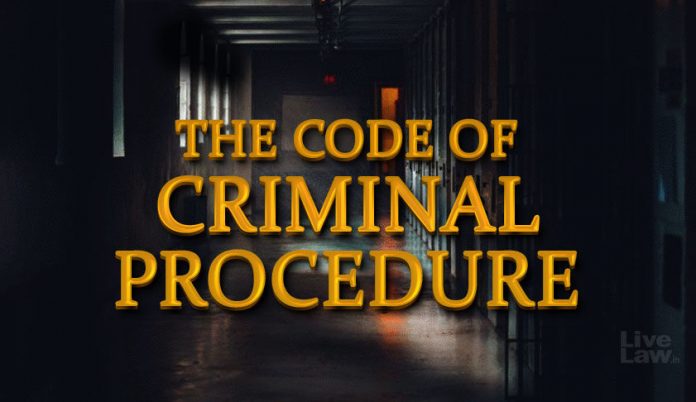This article is written by Ansruta Debnath, a student of National Law University Odisha. This article explores the intricacies of a ‘continuing offence’ and studies that in light of the various offences.
Table of Contents
Introduction
Continuing offence involves an offence committed over a prolonged period. Although it is not clearly defined in the Code of Criminal Procedure, 1973, its scope has been made clear by various judgments. This article explores the concept of ‘continuing offence’ which is followed by enumerations of some kinds of offences and cases that can come under the category of ‘continuing offence’.
Continuing offence : an overview
Continuing offence is a type of offence that continues again and again over a period of time. To prove its charge, one needs to prove that the offence started from the time of commission and continued till the person gets their liberty restored. An example of a continuing offence is kidnapping where the person’s liberty gets violated the moment they are kidnapped and the moment the offence is over is when the person is rescued.
However, it is important to make a distinction between continuing and repetitive offences. The same was made in the case of Adjudicating Officer Securities and Exchange Board of India vs Bhavesh Pabari (2019) In case of a continuing offence, the liability continues until the rule or its requirement is obeyed or complied with. On the other hand, recurring or successive wrongs are those which occur periodically with each wrong giving rise to a distinct and separate cause of action.
Legal provisions
Continuing offence finds mention in Section 472 of Code of Criminal Procedure, 1973 (hereinafter referred to as CrPC) which says that in case of a continuing offence, a fresh period of limitation begins to run at every moment of time during which the offence continues.
Period of limitation is the period within which the charges for an offence must be initiated after the commission of an offence. This was incorporated within the Code of Criminal Procedure, 1973 to ensure that the credibility of witnesses remains and to prevent unnecessary harassment of the accused (given the presumption of innocence). Chapter XXXVI of CrPC talks about the period of limitation. Under Section 468 of the CrPC, the limitation period of offences with a punishment of fine is six months, with that of term not more than one year is one year as well, and when punishment prescribed is more than one year but less than three years of imprisonment, the limitation period is three years. There is no limitation for taking cognisance of other, more serious offences.
Thus the entire point of adding Section 472 was to ensure that, in case the offence occurred over days or even months, the time available for the aggrieved party to acquire justice did not get reduced.
Relevant judgements
- In Gokak Patel Volkart Ltd. v. Dundayya Gurushiddaiah Hiremath (1991) the Supreme Court held that whether an offence constitutes a ‘continuing offence’ depends on the language of the statute that creates the offence, the nature of the offence and the purpose intended to be achieved by making a particular act an offence by law. Moreover, it was also held that the last act of the offence controls the period of the commencement of the limitation period
- In Udai Shankar Awasthi v. State of U.P. (2013), the Supreme Court observed that ‘continuing offence’ is not described in the CrPC because it cannot be given a fixed connotation. The court held that for a continuing offence to take place, the ingredients of the offence must continue even after the period of consummation. However, the Court held that continuing offence does not occur when damages from the injury continue.
- In Mukesh and Ors. vs. State for NCT of Delhi and Ors. (2017) the Supreme Court observed that conspiracy is a continuing offence and it continues to subsist till it is executed or rescinded or frustrated by the choice of necessity.
- In another case of V.K. Jain vs. Union of India (2016), the Court held that a continuing offence is one, which is susceptible of continuance and is distinguishable from one which is committed at once. It is one of those offences which arise out of a failure to obey or comply with a rule or its requirement and which involves a penalty, the liability for which continues until the rule or its requirement is obeyed or complied with. On every occasion that such disobedience or non-compliance occurs and recurs, there is an offence committed.
The case here was in relation to the Industrial Disputes Act, 1947 and it had been challenged that cognizance of offence could not be done as it was barred by limitation. But the court held that the offence so committed was ‘continuing’ in nature.
- In the case of State Of Bihar vs Deokaran Nenshi (1973), the Court held that a continuing offence was one that was susceptible to continuance, as compared to one that got finished, once and for all. The case was related to Section 66 of the Mines Act, 1952 but the Court held that Section 66 was not a continuing offence.
- Bhagirath Kanoria & Ors. Etc vs State Of M.P. & Ors. (1984) was a case related to the Employees Provident Funds and Miscellaneous Provisions Act, 1952. It was another important case where the Supreme Court commented on continuing offences. It said that The concept of ‘continuing offence’ did not wipe out the original guilt but kept it alive day by day.
- Finally, in Union of India & Anr. v. Tarsem Singh (2008), continuing offence or default in service law was explained as a single wrongful act that causes a continuing injury.
Some applications of continuing offences
Cases of domestic violence
The concept of continuing offence has been applied by the courts in many domestic violence cases. This is because domestic violence cases are generally prolonged and can occur over a large period. Thus to protect the victim it is very ideal that the limitation period starts from the last time the victim was abused. Offences like cruelty (Section 498A of IPC, 1860), assault (Section 351 of IPC) and battery (Section 350 of IPC) are generally involved in cases of domestic violence and thus all three can be considered continuing offences, provided the criteria for it is fulfilled.
- In an important and significant judgment of 2020, the Bombay High Court held that obtaining relief under the Protection of Women from Domestic Violence Act, 2005 could not be made equal to the registration of offences and thus limitations prescribed under Section 468 of CrPC did not apply to complaints under this Act. In the given cases, alleged acts of violence took place in 2008 while a complaint was filed in 2013.
This becomes especially important as it is generally observed that in cases of domestic violence, the victim generally does not rush to the police for filing a complaint after being inflicted with physical, mental, and physiological and economic abuse.
- In Aruna v. Omprakash (2021), the Bombay High Court held that the definition of ‘domestic violence’ in Section 3 of the Protection of Women from Domestic Violence Act, 2005 indicates that depriving an aggrieved person of not only stridhan but also shared household, maintenance, alienation from assets, banks lockers, etc., and preventing the aggrieved person from entering the aggrieved person’s place of employment would all be covered under the concept of continuing offences. As a result, just because the wife filed a lawsuit after one year, the case cannot be precluded by limitation.
- In an older case of Krishna Bhattacharjee v. Sarathi Choudhury (2016), the main issue in contention was whether a wife could make a claim of stridhan under Section 12 of the Protection of Women from Domestic Violence Act, 2005 even after judicial separation. The High Court had answered in the negative but the Apex Court held that stridhan was the exclusive right of the wife and that the husband and family members were mere custodians. Thus the concept of ‘continuing offence’ got attracted the moment of deprivation of stridhan.
- In Geeta Kapoor v. State of Haryana (2013), the Punjab and Haryana High Court held that physical and mental harassment was a continuing offence and that a complaint under the Protection of Women from Domestic Violence Act, 2005 could be filed at any time.
- Another important case in this regard is Anthony Jose v. State (NCT of Delhi) (2018) which stated that non-providing of maintenance is a continuous cause of action and even if for three years the respondent did not claim the maintenance for herself, the same would not debar her from seeking maintenance under Section 12 of the Protection of Women from Domestic Violence Act, 2005
Kidnapping
A major example of a continuing offence is kidnapping. Provisions of kidnapping and abduction are mentioned in Article 359 of IPC, 1860.
- A relevant case in this matter is Vimal Chadha v. Vikas Choudhary (2008). Here the Supreme Court held that in case of an offence of kidnapping for ransom and subsequent murder where the deceased was first found missing and missing report was lodged but telephone calls demanding ransom continued from time to time even after murder, the offence will be considered a continuing offence.
Another important observation of the Court was that to determine the age of the accused in a continuing offence, age as on the first day when the offence was committed will be considered.
- In Vikas Chaudhary v. State (NCT of Delhi) (2010), the Apex Court further held that every time a ransom call was made, even after the death of the victim, a fresh period of limitation commenced.
Companies Act
Continuing offence finds application even in acts like Companies Act, 1956. A major area of contention is Section 630 of the Act which involves wrongfully withholding possession of company property was considered a continuing offence. The same was held true in B.R. Herman and Mohatta India Ltd. v. Ashok Rai (1983). Moreover the same was held in Kannankandi Gopal Krishna Nair vs. Prakash Chunder Juneja and Ors. (1993), where Justice M.F. Saldanha observed that this case was- “…one more of the numerous litigations relating to the non-return of a company flat by an ex-employee…” and that in every scenario, Section 630 applied which was an established continuing offence.
However, Section 630 is not the only continuing offence in the Companies Act, 1956. In the case of Kuldip Singh v. State of Punjab and Ors. (1987), Section 159, 162 and 220 were also considered within the ambit of continuing offences.
Conclusion
Whether an offence is a ‘continuing offence’ has been extensively discussed in the courts. Although courts over the years have given a basic idea of what ‘continuing offence’ is and what are its essentials, proper uniform statutory guidelines do not exist, giving rise to a lot of ambiguities. Putting cases of domestic violence under the ambit of continuing offence has been a recent judicial innovation. This is significant as the fact is that women hardly come forward immediately after suffering domestic abuse. So, even if women come forward later, they will be given proper relief under Indian law.
Continuing offences do not only find application in criminal law. As seen above, it can also apply to acts including but not limited to the Companies Act, 1956 and Industrial Disputes Act, 1947. This varied range of applications is further proof of the need for uniform guidelines defining this category of offence.
References
- Bom HC | Concept of ‘continuing offences’ & limitation under Domestic Violence Act: Explained | SCC Blog
- Code of Criminal Procedure, 1973
- The Protection of Women from Domestic Violence Act, 2005
Students of Lawsikho courses regularly produce writing assignments and work on practical exercises as a part of their coursework and develop themselves in real-life practical skills.
LawSikho has created a telegram group for exchanging legal knowledge, referrals, and various opportunities. You can click on this link and join:
https://t.me/joinchat/L9vr7LmS9pJjYTQ9
Follow us on Instagram and subscribe to our YouTube channel for more amazing legal content.
 Serato DJ Crack 2025Serato DJ PRO Crack
Serato DJ Crack 2025Serato DJ PRO Crack











 Allow notifications
Allow notifications



